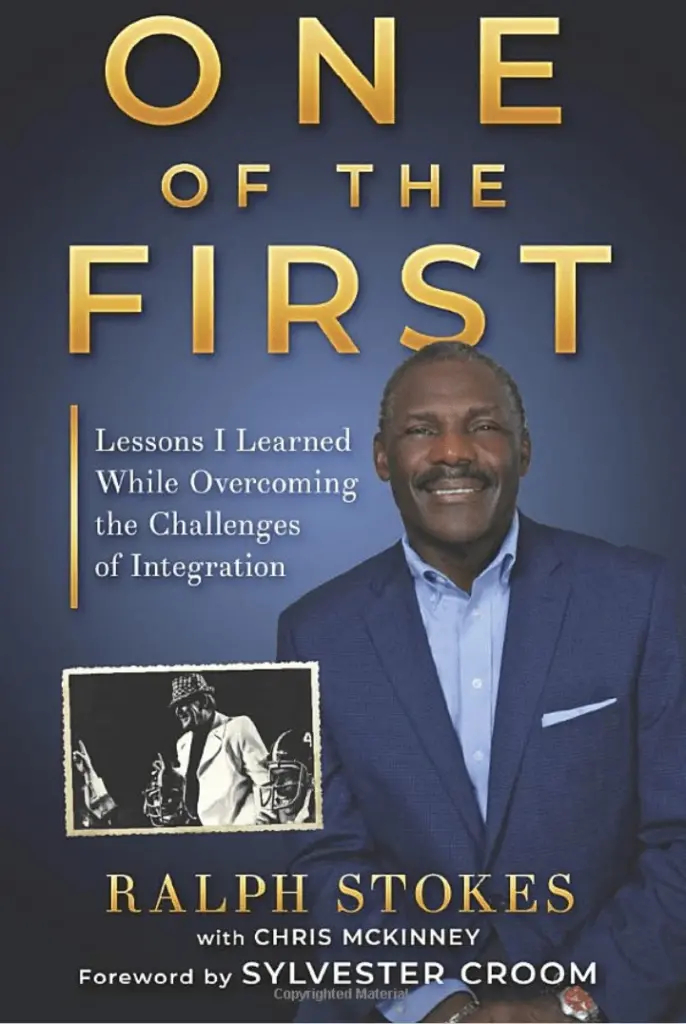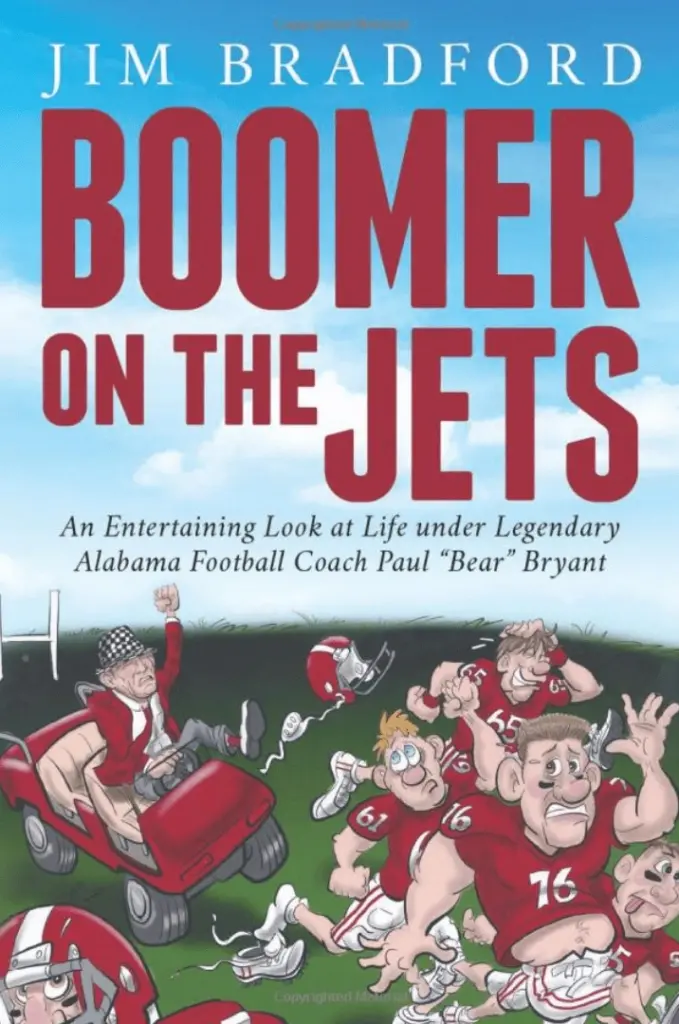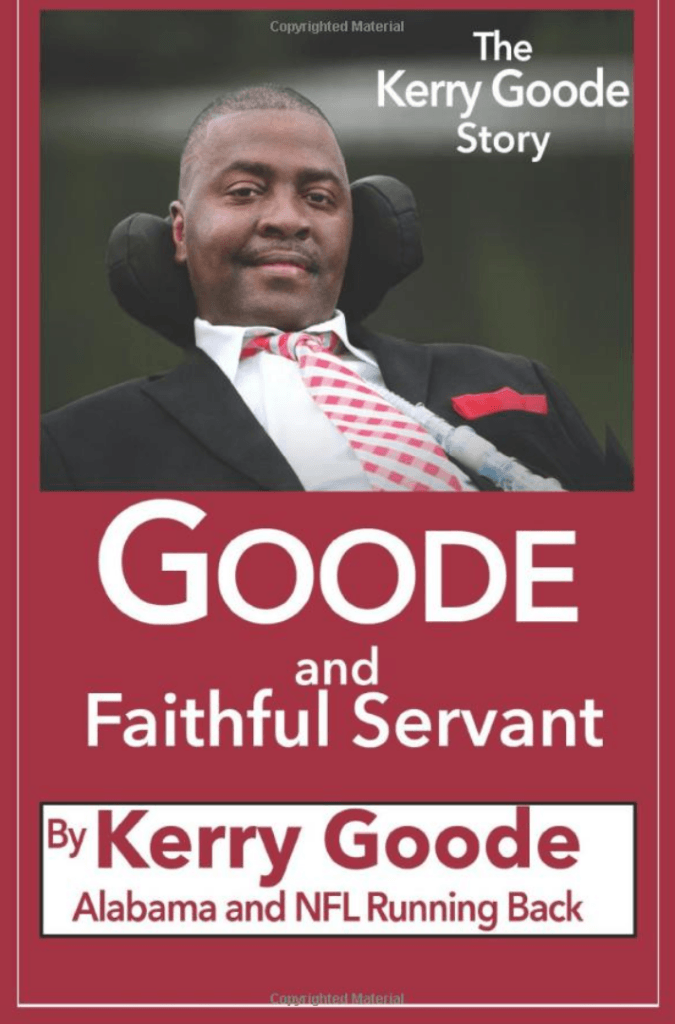“If you don’t like to read, you haven’t found the right book.” J.K. Rowling, author of the Harry Potter book series
J.K. Rowling would be proud, because when it comes to University of Alabama football, there are plenty of “right” books out there.
I’m guessing that throughout the 130-year history of Crimson Tide football, more than one hundred books have been written about the Tide, its players, its culture, and its history. I’d be willing to bet that no other college football program comes close.
But did you know that more than forty books have been written by former Alabama players? Not about former players, but by former players?
In hopes I haven’t left anyone out, here’s the list I’ve compiled. Not included in this list are all the books written about former players (of which there are many), but only those written by former players.

Surprised? I know I was.
Not included in this list are several books by a couple of these guys – Dr. Gaylon McCollough and John Croyle – who’ve written multiple non-sports books. For McCollough, such writings include medical books, political thrillers, and fiction novels. Croyle’s books are geared toward parenting and family topics.
I reached out to a few of these authors to find out the genesis of their books, i.e., what motivated each of them to write their book? Was it a therapeutic process? What did they learn on their journey?
Featured in this blog are five of these authors – Steadman Shealy, John David Briley, Ralph Stokes, Jim Bradford, and Kerry Goode.
Never Say Quit by Steadman Shealy (1980)

Very few Tide players have ever had an Alabama football experience quite like Steadman Shealy. A three-time letterman at quarterback, Shealy was a backup on the 1977 SEC title team and the 1978 SEC and national championship squad. As a starter in 1979, Shealy led Alabama to a perfect 12-0 record and the SEC and national titles. He was a volunteer coach in 1980 while in graduate school, then served as a Tide graduate assistant in 1981, 1982, and 1983 while in law school. He even hosted “The Bear Bryant Show” during Coach Bryant’s last season in 1982.
His book, Never Say Quit, was written as an encouragement to those going through difficult times.
“Never Say Quit was primarily about my comeback from knee surgery in April of 1978,” Shealy said. “Not only did I have my ACL and cartilage repaired, but I developed a serious infection following the surgery. During my rehab, I lost about thirty pounds, from 190 to 160.”
Shealy credits trainers Jim Goostree and Sang Lyda and their “old-tyme therapeutics” for his physical recovery following the surgery. But no amount of hands-on rehab rivaled the therapy from Above.
“I was able to get back playing in five months,” Shealy said, “and that’s a credit to the Lord. Never Say Quit chronicles my journey of faith during this time and how I never gave up. Coach Goostree and Sang sure helped me along the way, but the fact that I got back so quick was a true miracle from the Lord.”
Career in Crisis: Paul “Bear” Bryant and the 1971 Season of Change by John David Briley (2006)

John David Briley, now an associate professor of political science at East Tennessee State University, was a student trainer for the Tide in 1973.
Having such an academic background and having been on the scene during the early years of Alabama’s new wishbone offense, Briley’s authorship of a book about this transitional year was a natural.
Career in Crisis: Paul “Bear” Bryant and the 1971 Season of Change was the result of years of research, which included interviews with sixty Alabama players, twelve coaches, and several staff members.
“The transition to the wishbone was a story that needed to be told,” Briley said. “Frankly, I was surprised that someone closer to the Alabama football program had not already written it.
“The 1971 season changed everything in Alabama football. That team included two key Black players – Wilbur Jackson and John Mitchell – whose courage and skills brought acclaim to themselves, their teammates, and their coach. Coach Bryant also abruptly switched to the run-oriented wishbone attack, which was far removed from the glamorous offenses mastered in the 1960s by the legendary quarterbacks such as Joe Namath, Steve Sloan, and Ken Stabler.
“Compared to the less than stellar records of the 1969 and 1970 seasons, the results of 1971 were impressive,” Briley continued. “By the end of the season, Alabama had won eleven games and returned to national prominence by playing (but losing to Nebraska) in the Orange Bowl.
“The success of the 1971 season, in solving both the problems of integration in the SEC and the challenge of designing a new winning strategy, set the table for another decade of success with eight SEC championships and three national championships. In so doing, Alabama football and Bryant himself achieved legendary status as one of the great football programs of the late twentieth century.”
Perhaps the finest praise of Briley’s book came from Charles Reagan Wilson, who at the time of the book’s release was the director of the Center for the Study of Southern Culture at the University of Mississippi:
The study of a watershed year in Bear Bryant’s legendary football career shows the potential for sports history to educate us about the broader cultural context. The author brings a unique perspective: an insider’s knowledge of Bryant and the Alabama football program, along with a scholar’s objectivity. Historians of the modern South and modern America will benefit from this case study of social change and sports.
One of the First by Ralph Stokes (2021)

When former Tide halfback Ralph Stokes says he’s “one of the first,” he’s not kidding.
Only one year removed from Coach Bryant’s signing of Wilbur Jackson to the Alabama football program in 1970, Stokes joined Sylvester Croom, Mike Washington, and junior college transfer John Mitchell in the 1971 class. These “First Five” – Jackson, Stokes, Croom, Washington, and Mitchell – will forever go down in Alabama football history as the first Black football players to sign scholarships to wear the Crimson & White.
Stokes has quite a story to tell and does so magnificently in One of the First.
“One of the First is the story of how God has woven his calling and purpose into my life,” said Stokes, currently director of partnership marketing for the PGA Superstores. “All throughout my life, I kept finding myself as either the first or one of the very early African Americans to do different things or to go into new places. I was among a handful of early Black players at Robert E. Lee High School in Montgomery, and again at the University of Alabama.
“After college, I was the first Black person to hold a professional career in sales and marketing at Provident, the health and life insurance company. While hard to verify, I was quite possibly the first and only African American in the entire industry in the Southeast. What I know for sure was that I faced a lot of roadblocks and blazed a lot of trails in that industry.”
For almost fifty years, Stokes for the most part kept his unique story quiet. One of the First changed that, although the process wasn’t without apprehension.
“The book was prompted at the suggestion of friends who believed strongly that my story could inspire and encourage others,” said Stokes, who was one of the first two Blacks invited to join the Atlanta Country Club. “After some prayer and discussion with my family, I concluded that if my story could help even one person, it would be worth the effort.
“Some of the things I relived while going through the book-writing process were painful, while others were joyful and sweet memories. The best part is that as we looked back on the whole story, it was clear that God had His hand on my life from the very beginning. That He had used me to break barriers and help people break free of racism and prejudice. And that He had used me to help make a way for other Black people after me.”
In One of the First, Stokes shares many stories of suiting up for the Crimson Tide as one of the program’s wishbone halfbacks and as a key special teams player. But the stories are not limited to his days as an Alabama player.
“Many times on my journey, God worked through my perseverance to help remove prejudice from other people’s hearts,” said Stokes, who’s recently been elected as the first-ever African American president of the Georgia State Golf Association.
“The book includes stories about various mentors who may have started off with some misconceptions about Black people. But over time, through my hard work and dedication, they began to see things differently. And we developed amazing relationships in the process.
“Besides all of that, loving others, keeping a good attitude, working hard, and persevering through discrimination and prejudice have caused my family and me to reap tremendous rewards, both personally and professionally. It’s because of the things God has done in and through me that the book has touched many people’s lives in a positive way. I’m grateful for the opportunity to have lived the life I lived, and now for the opportunity to encourage others through my story.”
Boomer on the Jets: An Entertaining Look at Life Under Legendary Alabama Football Coach Paul “Bear” Bryant by Jim Bradford (2021)

“Boomer on the Jets? Where’d that title come from?” I asked Jim Bradford, a Tide offensive guard in 1973-77.
“During my junior year, my teammate Louis Green started calling me ‘Boomer,’ which was a nickname my father sometimes called me,” Bradford said. “Several of my teammates picked up on it and started calling me that. And since I spent most of my time on the second team, which at the time was called the Jets, my teammates began singing ‘Boomer on the Jets’ to the tune of Elton John’s ‘Bennie and the Jets.’
I’m glad I asked.
“Boomer on the Jets is about the hard work, dedication and discipline required to play football at the University of Alabama back in the 1970s for the greatest coach of all time – Paul Bryant,” Bradford said. “It’s a story about a bunch of kids who felt in their hearts they were embarking on a quest for an almost mythical goal for which they were willing to make whatever sacrifices were necessary to obtain. “The bonds that we formed with our teammates in the process left an enduring mark on our souls and shaped the way we lived the rest of their lives. Along the way we did some crazy things and had a lot of fun in between all the hard work. Trust me, you can’t make up some of the stories I wrote about.”
Bradford’s recollections are based on a journal he kept, beginning with the first day of summer practice in 1977 and ending a few weeks later with the season opener, a 34-13 victory over Ole Miss. After each journal entry he recounted the activities of the day and added additional stories of interest. A brief recap of the rest of the season and his activities following graduation conclude the book.
“My motivation for writing this book was not financial in nature,” Bradford said. “I knew it wouldn’t be a best seller. My primary goal was to memorialize some of the experiences my teammates and I now treasure so many years later. The older we get, the greater the possibility these memories will be lost forever. I didn’t want that to happen.
“Many of the stories I wrote were deadly serious to us at the time, and they still are today. As such, they were very instrumental in the way we lived our lives after we left the University. So, why do I think anyone would care to read about our experiences? For one thing, I hope the reader will find them entertaining, regardless of whether he or she is a sports fan.
“Secondly, and most important to me, the experiences I wrote about represent a defining time in our young lives when playing a simple game changed us forever and piqued the interest of thousands of sports fans across Alabama and the nation. As such, remembering these experiences are, and always will be, important to me.”
In Boomer on the Jets, Bradford rattles off story after story from that 1977 campaign, a one-loss SEC Championship season that ended with a 35-6 thrashing of Ohio State in the Sugar Bowl. (And, the season when Notre Dame jumped from fifth to first in the final polls to overtake the Tide for the national title.) But he’ll be the first to tell you that his most important story is located at the book’s end, an invitation to accept Jesus Christ as Lord and Savior.
“The invitation at the end is the most important part of the book,” he said. “If just one person reads it and is felt led to open their heart to the Holy Spirit, that would mean more to me than if my book was a New York Times best seller.”
Goode and Faithful Servant by Kerry Goode (2022)

Kerry Goode’s book title, taken from Jesus Christ’s Parable of the Talents in Matthew 25, says it all.
We all know Goode’s story, all the way back to his explosion on the scene as a Tide freshman halfback in 1983. We watched with sadness his budding, sure-to-be-superstar career cut short on the green turf of Legion Field on a warm September night in 1984. We followed his career through Alabama, a couple years in the NFL, and several years as an NFL strength and conditioning coach.
And with tears in our eyes, we’ve watched Goode’s valiant seven-year struggle with amyotrophic lateral sclerosis (ALS).
Goode has been, as Matthew 25 says, the consummate Good(e) and Faithful Servant. The book, Goode and Faithful Servant, tells his story.
“For three years I was constantly asked by my friends and family to write a book about my journey,” Goode said. “I was reluctant to do it because I was content on writing my daily posts on social media. I didn’t want a book to become all about me. Every social media post I wrote about dealt with something I wanted to share with my children, or it was something that I was personally going through at the time.
“So, I prayed over it and asked God if He wanted me to write a book because I’ve never been a close to the Lord as I am now. I didn’t want to lose that by making my life about me.”
Wanting to write a book and actually writing a book are two distinct matters. One may have in his or her mind everything to be said, but there are many moving parts to writing a book, e.g., organization of ideas, chapter flow, general editing, line editing, securing a publisher, and ensuring proper distribution once it’s published.
Goode’s trek to authorship had help from Above.
“My prayer was that God would provide everything I needed to write the book,” he said. “I was immediately contacted by a couple of publishers about writing a book, but it would be on me financially to do it. Considering the financial position ALS has put my family and me in, that wasn’t the answer I wanted to hear.
“A year later after I’d forgotten about the idea, a publisher who is also a pastor contacted me and said, ‘It has been placed on my heart to help you publish a book at no cost to you.’ The following day I was put in touch with someone who offered to help with the cover at no cost. This checked all the boxes. God had spoken.”
Goode remains a beacon of shining light to those experiencing tough times. Despite his challenges, he and a wife Tanja travel frequently to Alabama football games and other sporting events. Their special bond is proof positive of their “in sickness and in health” wedding vows.
Goode hopes Goode and Faithful Servant will generate attention to his Goode Foundation, a 501(c)(3) nonprofit whose mission is “to support, assist, educate, and empower patients and families affected by ALS, and inspire the educational pursuit of treatment alternatives and research for a cure.” (For more information, go to https://www.goodefoundation.org/)
“I could easily say that my life has been completely unfair,” Goode said, “but at the same time I achieved most of my goals. Not in the manner that I had hoped, but I still made them.
“I can honestly say this has been a wonderful ride.”
© 2022 Tommy Ford, All Rights Reserved